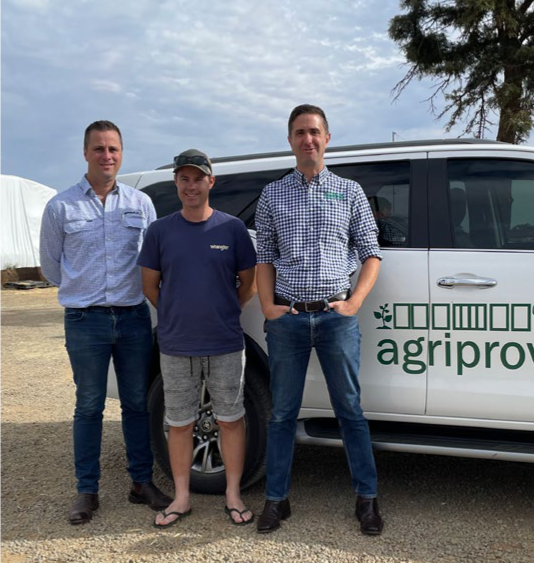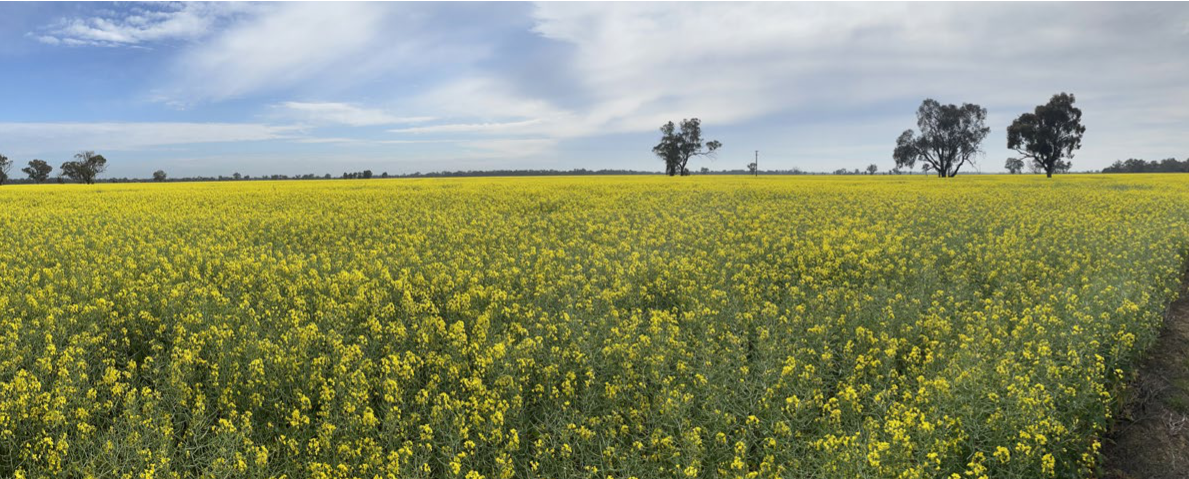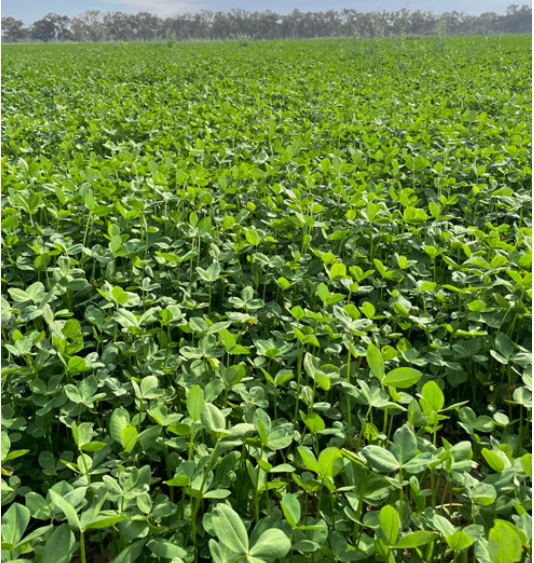Outstanding Soil Carbon Gains
Shepparton, Vic
Luke Felmingham is an innovative cropper and hay contractor North of Shepparton, VIC. Between Luke and his father Ken they crop 640 hectares with 185 hectares under irrigation (mixture of flood and center pivot). With a crop rotation of Canola, Lucerne, Wheat, Tef Grass, Rye Grass, and Clover, the annual rainfall is 468 mm, and the majority of the soil is shallow loam topsoil overlying clay dominant subsoil.
In May 2022 Luke & Ken both registered soil carbon projects with the Australian Government’s Emissions Reduction Fund (ERF) (Now known as The Australian Carbon Credit Unit (ACCU) Scheme. Luke and Ken chose to use the support of the LawrieCo/ AgriProve partnership in having their Carbon projects established, as they were able to provide end to end support; soil carbon building products and advice and a low-risk / low-cost model.
Soil Carbon “Baseline” tests were taken in July 2022, measuring the starting soil carbon stocks down to 1 metre. 12 months later, satellite data indicated that soil carbon levels had grown, so again a soil testing rig was deployed (24/7/23) to perform a second round of tests.

Soil carbon gains were outstanding on Luke’s property equating to around 0.25% in the top 30cm. On average 12.7 tonne/ha of carbon was built at Luke’s property and 0.8 tonne/ha at his father Ken’s.

To ratify the significant increase a further round of soil testing was undertaken (in August 2023), the carbon test data confirmed the initial findings. In order to secure Australian Carbon Credits a property and testing audit is now in process.
Luke and Ken will have the choice to hold the Carbon Credits awarded to them, or trade them at the current spot market price, holding and selling them later or in future “retiring” them to offset other farm emissions for carbon neutral status of their farm produce. Either way, the benefits of soil carbon gains will be of benefit to their overall farm productivity with the boost to soil health and moisture holding capacity growing their natural asset value of the farm.
The different management practices deployed on Luke and Ken’s property provide a most interesting case study of what can be done to build soil carbon. As mentioned earlier, LawrieCo supported Luke and Ken in adopting the soil carbon projects. However, unlike most other soil carbon project providers, LawrieCo also actively supports growers with carbon building fertiliser products, training and advice. LawrieCo have a long history of building soil carbon and have developed / tested and brought to market fertiliser products designed for maximising farm productivity whilst building soil carbon.
On Luke’s property he adopted 5 main changes to his farm practice:
1. The biggest and newest step on Luke’s property was the decision to DIGEST his stubble. There was a significant amount of stubble following his wheat crop of 5 – 6 T/ha. Normal practice was to burn stubble, as practically next crops could not be sown into this amount of stubble, due to machinery blockages. Luke lightly tilled his stubble with a speed disc and applied with boom spray on stubble two products DIGEST READY, a live biological ferment of cellulous digesting fungi, and KICKER, a powerful fungi stimulant and food source to break down the remaining stubble in the paddock. Fungi are much more efficient converters of carbon than bacteria.
2. The traditional Ag-chem summer program was buffered with the LawrieCo F75 FULVIC to reduce the impact on soil biology and tie up off target spray within the system.


3. Canola seed was treated with LawrieCo SureCrop PRIME – a powerful biostimulant and microbial seed dressing, in order to establish a strong network of plant roots and biology to maximise carbon draw down. This was sown with a new disc seeder, which was then able to travel easily through the digested stubble.
4. At sowing Humate Granules at 10kg/ha were included with 100 kg/ha of MAP. Humates stimulate
beneficial soil fungi, buffer the use of synthetic fertilisers, act as a natural chelating agent due to a high CEC of approx. 450, and promote significant root growth which is key for both nutrient scavenging, increasing water uptake, and importantly building carbon.
5. Broadcast Nitrogen was supplemented with foliar applied application; a balanced Nitrogen, Calcium and Phosphorous product called LawrieCo GROWTH and a LawrieCo Biostimulants containing fish, kelp, amino acids and trace minerals, called BOOST. Used in conjunction with urea coated with LawrieCo ENHANCE; a fulvic / biostimulant based fertiliser coating designed to increase nutrient uptake and decrease leaching throughout the soil profile.

Both farms’ yields were either unaffected
or enhanced by the carbon building
systems and at or above district average. In
regard to cost of the inputs Luke suggests
he did invest a little more around $80/ ha
but considering the long-term benefits of
his soil carbon and health he is focused
on being sustainable. Should Luke choose
to trade his credits today, Luke’s “carbon”
would return him $1220 /ha. (Spot ACCU
price of $35)
On Ken’s property the approach was different, he maintained his existing fertiliser practices. Ken decided to simply trial a few products with the view to wait for the results on Luke’s property. Ken used LawrieCo Boost as a soil bio stimulant, and LawrieCo F75 Fulvic with all chemical applications. In adopting the carbon building strategies / products, Luke found that his perception of productivity was challenged, as he now found himself considering things such as the living soil microorganisms, naturally occurring plant hormones and stimulants. It really does demonstrate successful farmers are farming carbon with the development of microbial populations being the new “livestock.”
LawrieCo have supported the adoption of growers in over 250 soil carbon projects throughout Australia in the last 2 years. The AgriProve satellite monitoring has flagged other LawrieCo client projects as possible leads for carbon gains, so soil testing rigs are being deployed on these projects.
What is a carbon credit?
One carbon credit is equal to one tonne of carbon dioxide equivalent (C02e) sequestered or avoided by the project.
Carbon credits generated from ERF projects are called Australian Carbon Credit Units (ACCUs).
1 tonne Soil Carbon = 3.67 tonnes of C02e
1 tonne Soil Carbon = 3.67 ACCUs
Subscribe to our E-News

